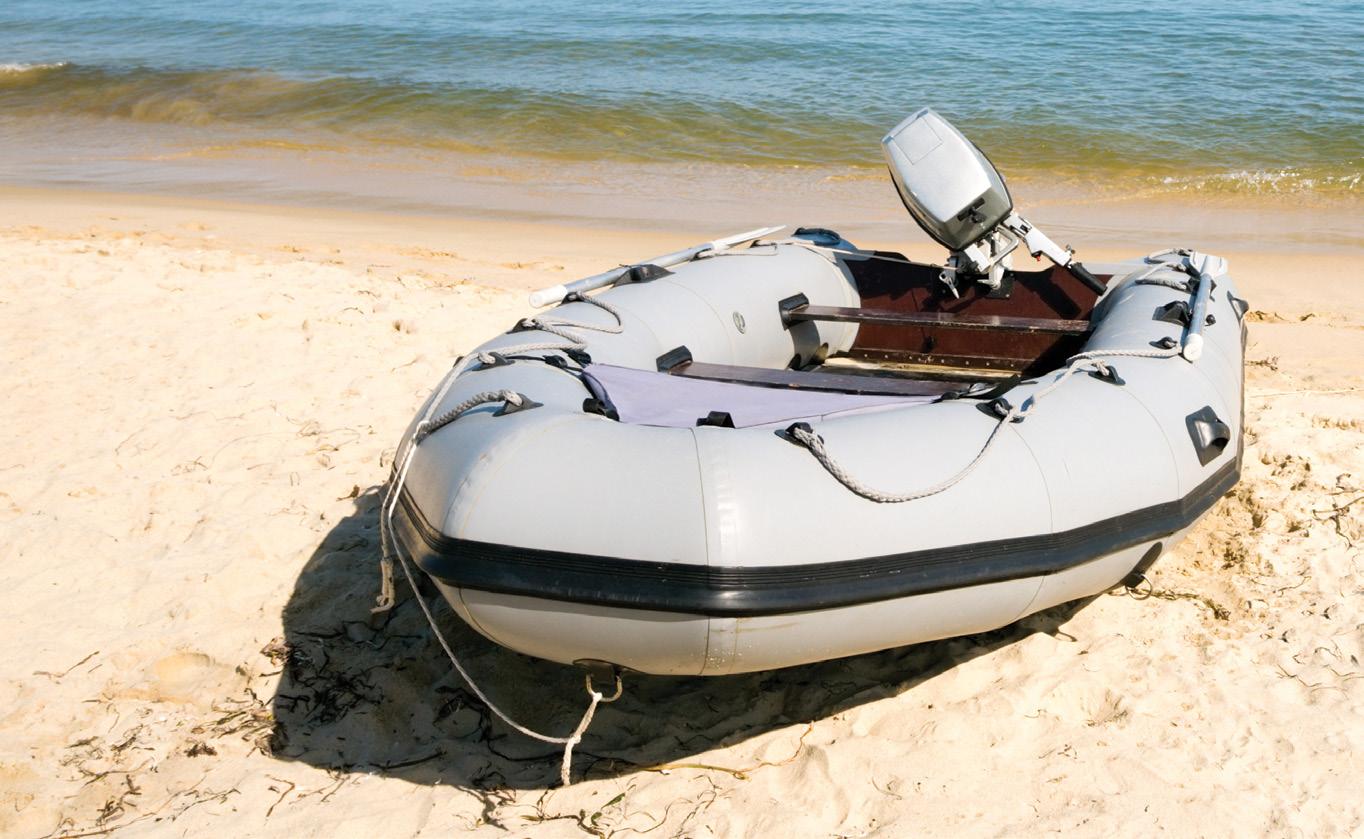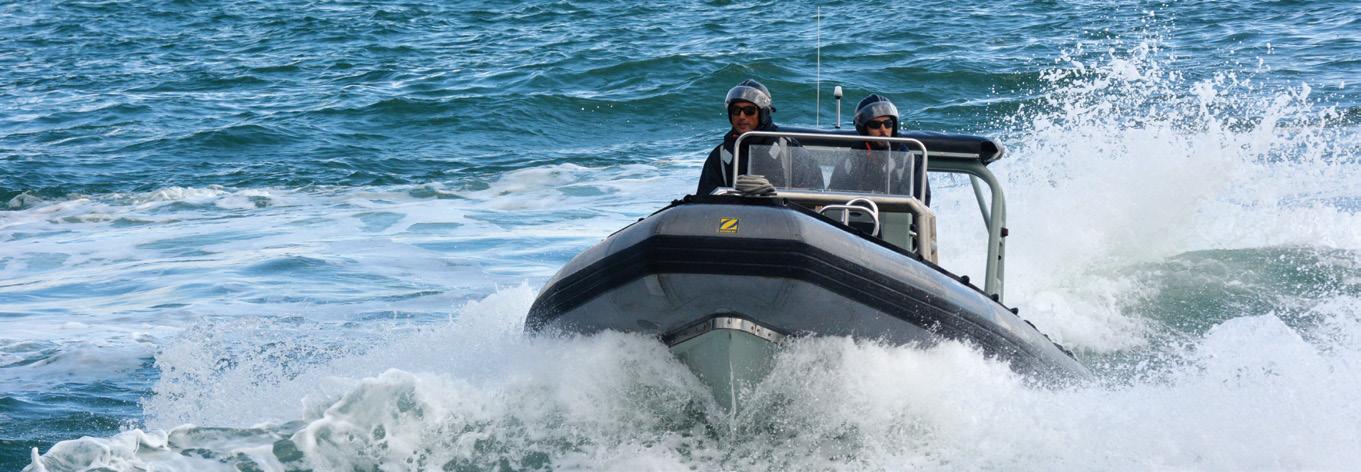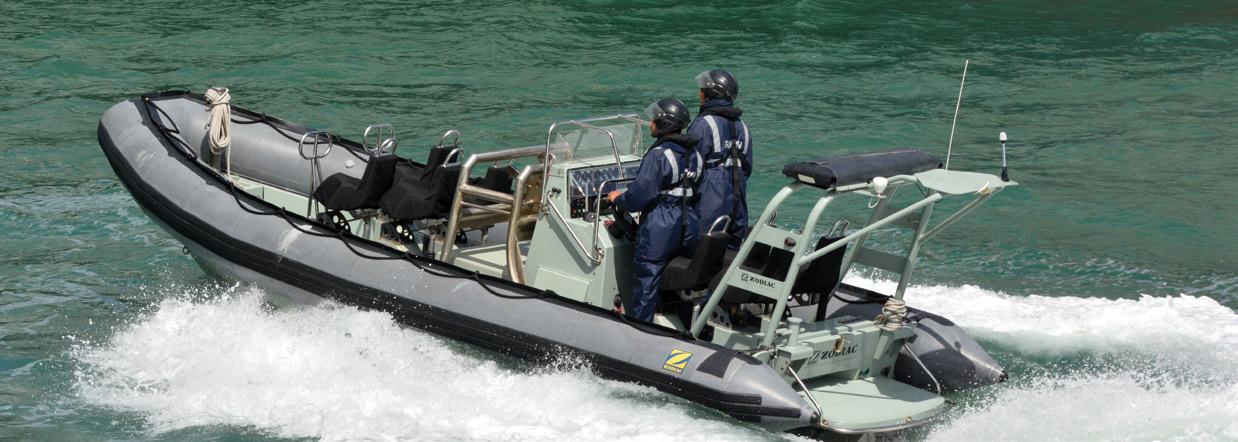
5 minute read
FUN ON THE WATER IN ZODIAC INFLATABLES
The practical reality of an inflatable boat means that it can be easily moved from one location to another and it can be stored away from the water when not in use. In theory, this should be the perfect gift for those for whom spontaneity is important. “Where shall we take the boat this weekend?” An inflatable boat delivers various different cruising options that can be enjoyed, be that on the sea, in lakes or on wider rivers. This real flexibility is king.
WORDS MARK WILKINS
Good quality inflatable boats are not cheap but the single most valuable benefit is that they result in a huge saving on mooring fees and other costs of conventional boating.
There are certain iconic products that through familiarity, usually based on exceptional build quality, have become the noun that defines the object. Their name is often used as a shorthand description for the generic product. The examples of this phenomenon include Hoover, Durex, Sellotape and Zodiac. They are what are described as heritage or legacy brands that deliver the user a comfortable, predictable and reliable experience based on proven performance.

My wife, when a teenager, spent many happy summers on Spain’s Costa del Sol and when describing an inflatable boat she always uses the term ‘Zodiac’. I suspect most of the inflatables she enjoyed were indeed Zodiacs and owned by those who’d equip them with a Mercury or Johnson outboard for use as a ski boat, a fun day boat or even as a tender to larger vessels.
It will come as no surprise that these air filled, thermo bonded and tube-gunwaled boats can trace their origins to the airships of a French company, Zodiac Aerospace, founded in 1896. In the 1930s, Zodiac engineer, Pierre Debroutelle, developed early prototype inflatable boats for the use of the French Aéronavale, the aviation arm of the French Navy. In 1934 he invented an inflatable kayak and catamaran and in 1937 Aéronavale commissioned Zodiac to produce inflatable pontoons to carry naval ordinance.

Following its development for military use, in the 1950s French Naval officer and biologist, Alain Bombard, is credited with designing the combination of an outboard engine, a rigid floor and the boat-shaped inflatable. The resulting design was built by Zodiac. To prove his inventions endurance, Bombard sailed a version across the Atlantic in 1952 with his long-time friend and fellow naval officer, Jacques-Yves Cousteau. Its excellent performance made the Zodiac, in later years, the obvious tender of choice for Cousteau when equipping his iconic dive boat, Calypso.
The 1960s saw a growth in the market for the recreational use of small boats. Zodiac answered this demand partly by increasing their own production and also by licensing others, such as Humber in the UK, to produce their excellent boats. Further, in an early example of product placement, US viewers were exposed to Zodiac inflatables in Cousteau’s film The Undersea World of Jacques Cousteau. An inevitable spike in US sales resulted.
Increasingly from the early 1970s, the modern rigid inflatable boat (RIB) was a development of the classic, almost unsinkable, inflatable boat. Its simple design was enhanced by the addition of a rigid floor and solid hull in either Glass Reinforced Plastic (GRP), steel, wood or aluminium. The addition of a sturdy transom allowed a powerful outboard engine to be mounted to the rear, making these crafts both quick and very agile. RIBs have proven themselves to be extremely reliable and able to cope with the roughest seas.
I do not wish to sound too purist but the idea of having a solid GRP hull seems to chop off at the knees the trophy of flexibility that the inflatable offers. For some, the time taken to inflate the boat that already has a solid hull seems to mitigate away from the core idea. Why not just have a solid-hulled boat, along with the attendant limitations, in the first place?

RIBs became a favourite with the military and Zodiac established a separate division, Zodiac Milpro, to service this demand. The RNLI and air-sea rescue services applications for which Zodiac RIBs have been employed are an area where the product’s durability, stability and manoeuvrability really excel. Often manned by several crew, many kite and wind surfers and those who have drifted out to sea on a beach lilo owe their lives to the heroic operations of these services and their trusty crafts.
Illegal drug and tobacco smuggling gangs, intent on landing contraband while avoiding detection in a part of the world many of us know well, made RIBs their vessel of choice. The Customs authorities armed with even more militarygrade versions of the RIBs have sought, often very successfully, to thwart the smugglers ambitions.
In the summer of 2018 it was announced in Madrid, as part of Spain’s ongoing war against drug smuggling, particularly on the Costa del Sol and around Gibraltar, that the Spanish Government would take steps to ban the private use of RIBs that were longer than 8m or smaller but with a 150kW engine or greater. The ban came into effect in early 2019.

You will require to own a vehicle with a reasonably large cargo space to complement the user-friendliness of your inflatable boat. You will need to accommodate the uninflated boat, an outboard engine (nothing too small), a fuel tank, folded flooring and life jackets. For the larger versions you may also need to have access to a trailer to launch your craft. Is this starting to sound less convincing as an alternative to conventional boating?
Time also needs to be allocated for the inflation of your boat. As kids we had a bright yellow but very solid Campari inflatable dinghy that was like a tender to our cabin cruiser in locations where nighttime mooring was difficult. It was small and took perhaps half an hour to inflate using a rather pedestrian and whistling foot pump. I appreciate that technology has moved on and with 12 volt air pumps, a fairly large inflatable can be ready to go in a reasonably short time but it’s not a ten minute job. Given the construction of the modern inflatable with its series of stand-alone thermo-bonded air bags, designed to prevent a complete disaster if one of them fails while at sea, there is quite a lot of pumping to do.
More articles from Aestheticons can be seen at www.aestheticons.wordpress.com










